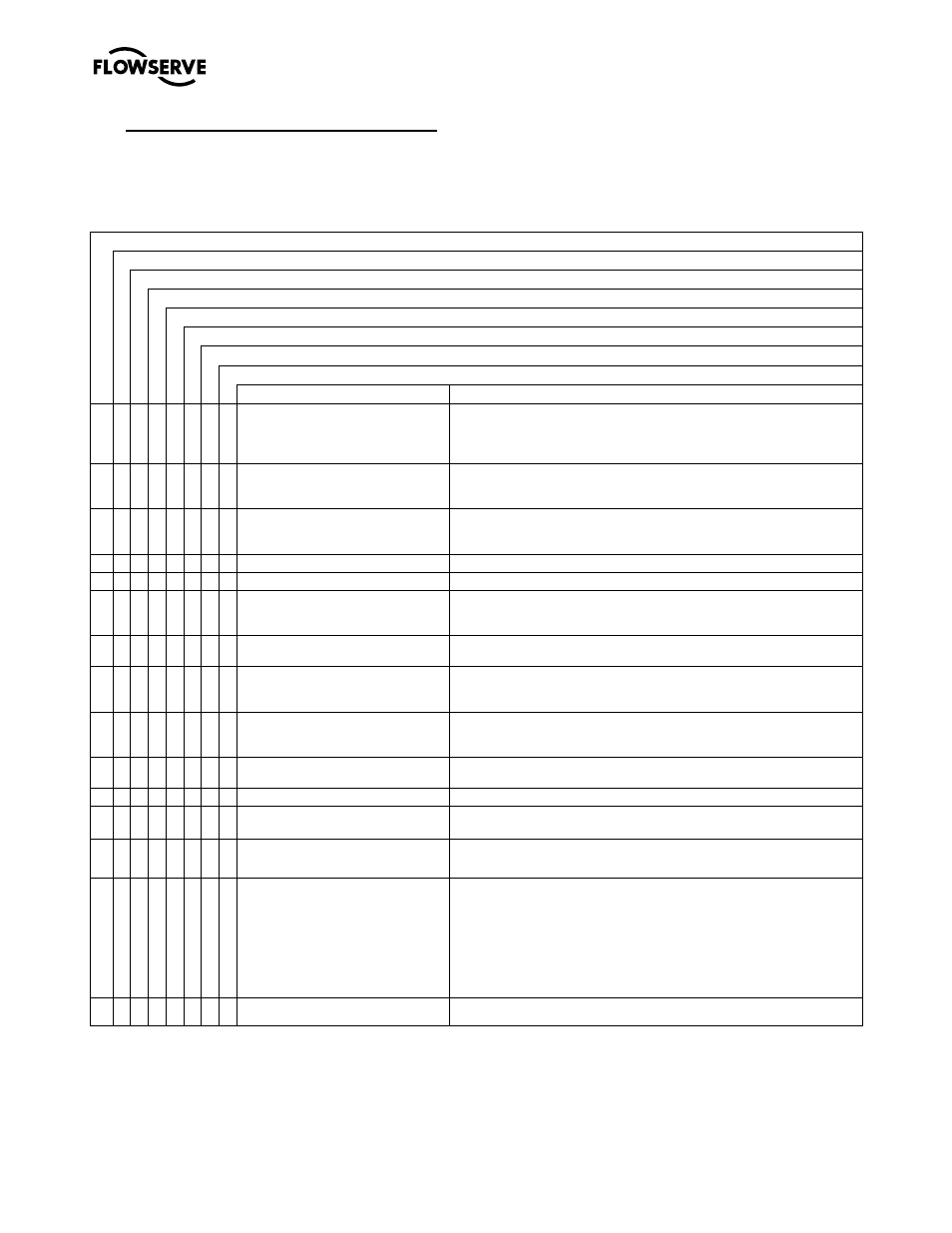7faults; causes and remedies – Flowserve M-series PolyChem User Manual
Page 52

USER INSTRUCTIONS PolyChem M-SERIES ENGLISH 71569218 07-11
flowserve.com
Page 52 of 60
®
7
FAULTS; CAUSES AND REMEDIES
The following is a guide to troubleshooting problems with Flowserve PolyChem pumps. Common problems are
analyzed and solutions offered. Obviously, it is impossible to cover every possible scenario. If a problem
exists that is not covered by one of the examples, then refer to one of the books listed in section 10 Additional
sources of information or contact a Flowserve sales engineer or distributor/representative for assistance.
FAULT SYMPTOM
Pump not reaching design flow rate
Pump not reaching design head (TDH)
No discharge or flow with pump running
Pump operates for short period, then loses prime
Excessive noise from wet end
Excessive noise from power end
Pump exhibits increased or higher than anticipated power consumption
Pump exhibits decreased or lower than anticipated power consumption
PROBABLE CAUSES
POSSIBLE REMEDIES
Insufficient NPSH. (Noise may not
be present.)
Recalculate NPSH available. It must be greater than the NPSH required by
pump at desired flow. If not, redesign suction piping, holding number of
elbows and number of planes to a minimum to avoid adverse flow rotation as
it approaches the impeller.
System head greater than
anticipated.
Reduce system head by increasing pipe size and/or reducing number of
fittings. Increase impeller diameter. (nb: Increasing impeller diameter
may require use of a larger motor.)
Entrained air. Air leak from
atmosphere on suction side.
1. Check suction line gaskets and threads for tightness.
2. If vortex formation is observed in suction tank, install vortex breaker.
3. Check for minimum submergence
Entrained gas from process.
Process generated gases may require larger pumps.
Speed too low.
Check motor speed against design speed.
Direction of rotation wrong.
After confirming wrong rotation, reverse any two of three leads on a three
phase motor. The pump should be disassembled and inspected before it
is restarted.
Impeller too small.
Replace with proper diameter impeller. (NOTE: Increasing impeller
diameter may require use of a larger motor.)
Plugged impeller, suction line or
casing which may be due to a
product or large solids.
1. Reduce length of fiber when possible.
2. Reduce solids in the process fluid when possible.
3. Consider larger pump.
Wet end parts (casing, bearing
holder, impeller, containment shell)
worn, corroded or missing.
Replace part or parts.
Not properly primed.
Repeat priming operation, recheck instructions. If pump has run dry,
disassemble and inspect the pump before operation.
Impeller rubbing.
Check wet end bearings for wear.
Damaged bushings pump shaft,
thrust bearings or impeller.
Replace damaged parts.
Abnormal fluid rotation due to
complex suction piping.
Redesign suction piping, holding the number of elbows and planes to a
minimum to avoid adverse fluid rotation as it approaches the impeller.
Magnetic coupling decoupled due to
excessive temperature or excessive
horsepower requirements.
1.
Check process temperature to verify it’s within operating limits of
pump.
2. Check horsepower required by the process to verify it is within the
operating limits of the coupling size.
3. Replacement of the magnet assemblies may be necessary if the
magnets overheated and were permanently damaged. A static torque
test of the magnetic coupling may be necessary. Contact your
Flowserve representative for details.
Inner magnet rubbing shell.
Check for damaged or worn pump shaft and bushings.
